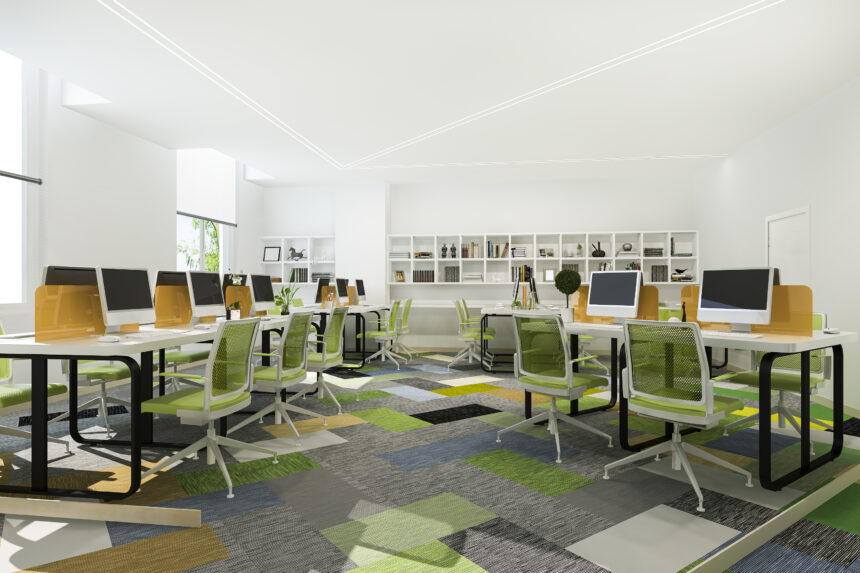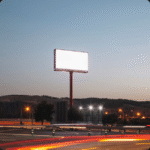Imagine walking into your office and hearing a gentle stream and distant birdsong instead of keyboard clatter. That’s the promise of nature audio design — a calmer, clearer headspace by sound.
🌊 A new era of office ambiance
The sterile, pin-drop-quiet cubicle is officially out. Today’s progressive workplaces are layering nature audio design into their floor plans: soft rain for heads-down focus, forest canopy for creative jams, a shoreline hush for late-afternoon lulls. These aren’t random playlists — they’re designed soundscapes calibrated to reduce stress and support attention without hijacking it.
Think of it as sonic biophilia. Instead of faux plants and a “serenity” poster, you’re bathing the space in acoustics the brain recognizes as safe, helping people settle faster into deep work. That idea sits squarely within biophilic design — connecting people and nature inside built environments for health and performance gains.
“My office just added a nature sound channel — feels like I’m working in a greenhouse, in a good way.” — a TikTok user
“Birds chirping while I debug code is weirdly comforting. The day moves smoother.” — a Redditor
“We turned on ocean audio in the afternoon. Meetings got calmer, decisions got clearer.” — an X user
🎶 Why nature sounds work (the science in plain English)
Your brain is tuned for nature. Research shows natural soundscapes can lower stress and improve mood by easing heart rate and dampening cortisol spikes — exactly what high-stimulus offices provoke. A helpful entry point is this Frontiers in Psychology hub, which collects work on restorative environments and natural sound: explore the journal’s scope and related studies via the Frontiers in Psychology landing page.
There’s a cognitive layer, too. Attention Restoration Theory suggests nature’s “soft fascinations” (rustling leaves, flowing water) replenish depleted attention because they’re gently engaging, not demanding. If you’ve ever felt your focus return after a walk under trees, you’ve felt ART doing its thing.
🧭 What good nature audio design feels like
- Present, not prominent. You notice the calm, not the “track.”
- Task-tuned. Morning clarity, afternoon calm, late-day reset.
- Steady and subtle. No vocals, jump scares, or wild dynamics.
- Choice-friendly. Clear opt-outs and a few quiet nooks for those who need silence.
Micro-moments that add up
- 8:45 a.m. ramp-up: Light forest canopy sets a stable baseline as inboxes open.
- 1:30 p.m. post-lunch focus: Stream + distant birds counters the dip without caffeine.
- 4:15 p.m. decision window: Shoreline hush slows pulse and smooths tough calls.
Quick win: Pair nature audio with warmer, indirect lighting in focus zones; the combo reduces “busy brain” without killing energy.
🛠️ How to craft your office soundscape (step-by-step)
1) Map your zones
- Deep-work lanes: Library corners and quiet rooms → gentle stream + room tone.
- Collab tables: Project rooms, whiteboard walls → meadow/field ambience that lowers reactivity.
- Transitions: Entries, cafés, corridors → soft wind textures that welcome without inviting loitering.
2) Choose the right palettes
- Water (stream > surf): Continuous, broadband-like masking without harsh transients.
- Forest (leaves, distant birds): Sparse events; avoid frequent calls or sharp chirps.
- Rain (light, steady): Excellent for masking; no thunder or sudden shifts.
3) Set volumes & dynamics
- Start around 35–42 dBA measured where people sit.
- Keep dynamics tight (about ±3 dB across the hour).
- Duck levels near huddle pods so voices stay intelligible.
4) Schedule with intention
- AM clarity: brighter textures (light water + canopy).
- PM calm: darker textures (soft rain + room tone).
- Friday afternoons: add field/meadow to relieve churn.
5) Offer control (without chaos)
- Provide a simple control (room tablet or Slack command) for softer/stronger/off.
- Offer low-stimulus zones for sound-sensitive teammates.
- Publish a two-paragraph “what we play and why” note — transparency builds trust.
📈 Results you can actually measure
- Lower perceived stress on pulse checks.
- Faster “time to flow” after interruptions.
- Higher task completion for writing, coding, analysis.
- Fewer headphones at loud volumes, which makes collaboration easier.
For foundations on the nature-health-design triangle (and how sound fits into it), the biophilic design overview is a solid, neutral primer you can pass to facilities and leadership.
🧪 Mini case studies (composite, real-world learnings)
The analytics startup (open plan, 80 people)
A four-week pilot of low-volume stream audio along a focus aisle coincided with a 12% drop in Slack DMs during core hours — teammates solved small problems in person because the room felt calmer. Noise complaints fell to near zero.
The creative agency (hybrid, project rooms)
Nature audio + acoustic panels + greenery extended sustained editing sessions and reduced restarts. A 3–6 p.m. rain schedule became the team’s “landing runway.”
The law firm (quiet floors, private offices)
Door-by-door controls with a muted “library breeze” as default eased late-night drafting. Partners kept control; associates reported fewer attention slips and smoother review cycles.
🧰 Starter kits (good → better → best)
Good (quick and scrappy)
- One compact amp + two ceiling speakers per 600–800 sq ft.
- Licensed, long-form nature recordings (no vocals).
- Manual AM/PM playlists.
- A laminated “What you’re hearing & why” card.
Better (managed)
- Networked zones by neighborhood.
- Scheduler with calendar hooks (auto-soften during all-hands).
- Volume caps and dynamic-range control baked in.
- Feedback form tied to facilities tickets.
Best (adaptive)
- Sensor-aware levels (noise floor, occupancy).
- Task-aware scenes linked to room bookings.
- Privacy-respecting sentiment logging.
- Quarterly palette refresh to avoid habituation.
🔐 Health, safety, and inclusion
- Parallels to scent policy: If you limit fragrances, mirror that care with sound; not everyone experiences audio the same way.
- Neurodiversity matters: Keep true quiet spaces available.
- Clear disclosures: Share source types and volume targets so it doesn’t feel like stealth psychology.
🧩 Nature audio vs. white noise (and when to mask)
White/pink noise masks speech but can feel fatiguing. Nature audio design gives you masking plus meaning — a textured bed the brain treats as non-threatening. For speech privacy in phone rooms, blend a soft water bed with low pink noise so adjacent chatter isn’t intelligible yet the room still feels alive.
🌺 Voices from the digital wild
“My office just installed a nature sound system, and it’s a game-changer! I feel like I’m working in a garden instead of a cubicle. 🌿” — a TikTok user
“Hearing birds while I type is oddly comforting. My 9-to-5 feels less grindy, more like a retreat.” — a Redditor
“We turned on nature audio at work, and the difference is night and day. Productivity up.” — an X user
🧱 Common pitfalls (and fixes)
- Too loud or too busy: Keep levels modest; avoid frequent birds or dramatic weather.
- Short loops: People hear repeats; use hour-plus recordings or true generative sound.
- One-size-fits-all: Different teams, different needs — zone your audio like you zone your lighting.
- No opt-out: Always provide quieter alternatives.
🔄 Pairing audio with broader biophilia
Nature audio works even better alongside daylight, plants, and natural textures. If you want a trend-watch lens on how workspaces are evolving, take a spin through one of our latest trending pieces on BigTrending — a fast way to see how teams are blending human needs with modern design. (We keep it current here: BigTrending’s latest features.)
🧩 Implementation checklist
- Map zones and pick palettes (water/forest/rain).
- Install speakers and set dBA targets per zone.
- Build a simple schedule (AM clarity, PM calm).
- Publish a “what & why” note + opt-out paths.
- Gather feedback at weeks 2 and 6; adjust loops and levels.
- Refresh content quarterly to beat habituation.
🔮 The future: adaptive, ethical, and personalized
- Adaptive soundscapes: Levels respond to occupancy and noise in real time.
- Personal “audio halos”: Opt-in desk beacons that subtly steer nearby masking without headphones.
- Ethical sound design: Clear disclosure, easy control, data minimization — delight without manipulation.
When done well, nature audio design isn’t a gimmick; it’s an acoustic wellness layer that nudges your office toward calmer conversations, better decisions, and fewer “why is my heart racing?” moments. In a world where attention is taxed and notifications never sleep, giving your team a kinder soundscape is one of the highest-ROI upgrades you can make.
FAQs: Nature audio design in the workplace
What is nature audio design?
It’s the intentional use of natural soundscapes (water, forest, gentle rain) to shape mood and focus in offices. As part of biophilic design, nature audio design brings restorative cues indoors.
How does nature audio affect productivity?
By lowering stress and restoring attention. See the Attention Restoration Theory primer and the research gateway at Frontiers in Psychology for related studies supporting nature audio design.
What sounds work best?
Steady water, soft forest canopy, and light rain at low volume. Avoid vocals and big crescendos so nature audio design stays gentle and consistent.
Can any office use it?
Yes — zone it. Open plans, huddle rooms, and quiet corners all benefit when nature audio design is tuned by task, time, and team.
How do we start?
Pilot two zones for four weeks, measure feedback and “time to flow,” then scale. Publish a short policy so nature audio design feels transparent and opt-in friendly.









